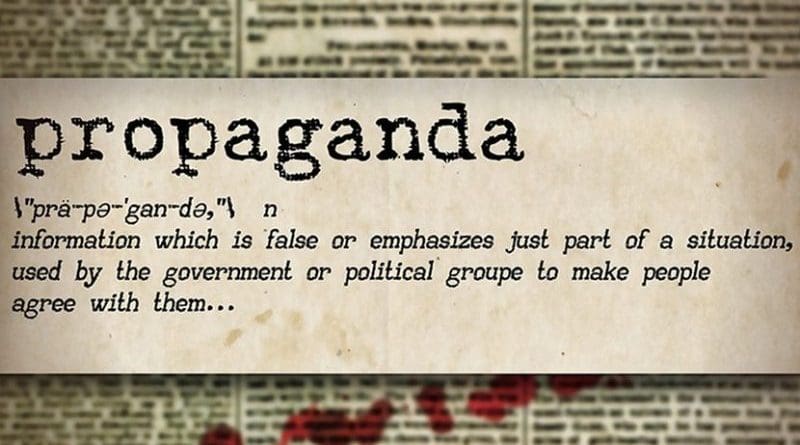Online Maoist Propaganda: How India Should Respond – Analysis
Extremist organisations have long tended to use the Internet to emphasise their strengths and gloss over their weaknesses. It is thus not surprising that there is no fixed pattern to the intensity of extremist propaganda. This is true both in the past and current cases of al Qaeda and the Islamic State. In the case of the Communist Party of India-Maoist (CPI-Maoist), however, its online presence—to elicit support, eulogise deceased leaders, comment on global and local developments, and issue calls for action—continues to be linked to its organisational and logistical capacity.
In the CPI-Maoist’s heyday, several dozen websites and blogs had proliferated on the Internet, most of which were mirror sites simply reproducing press releases and other publications to keep the Party alive even as government agencies tried to block them. The strategy was effective: there was always a website or a blog where such publications could be found. These primarily catered to Indian as well as foreign audiences. Intelligence agencies believe that most of these websites were hosted on foreign servers, making the task of taking them down difficult.
While a majority of these online enterprises operated on an ad hoc basis, a more organised website—Banned Thought—came into being in 2006 or 2007. With the objective of acting as a repository of left-wing extremist literature worldwide, the website provided a prominent ‘space on loan’ to the CPI-Maoist. All publications, since the group’s formation in 2004, were featured. The website was meticulously updated and sometimes documents were uploaded on a real-time basis. Although the website, hosted on a Canada-based server, denied any links with the CPI-Maoist, that the group or its sympathisers mailed their press releases and other publications to it on a regular basis was unmistakable. To an extent, Banned Thought became a ready reference for the media, researchers, as well as officials.
The number of publications posted on Banned Thought corresponded not so much with the influence of the CPI-Maoist and its military prowess, but to the outfit’s growing need to reach out to constituents within the country and outside. While 248 statements/documents were posted on the website between 2004 and 2010, it increased to 289 between 2011 and 2018. By 2018, the group’s ability to issue releases in three languages (English, Hindi, and Telugu) appeared to have been curtailed, owing probably to the availability of manpower. However, the website continued to post releases alternately in Hindi and Telugu, and occasionally, in English.
In early December 2018, on the recommendation of the Maharashtra Police’s Anti-Terrorism Squad (ATS), the Ministry of Home Affairs (MHA) proscribed Banned Thought in India. The website was accused of serving as a platform for “Naxal and Maoist propaganda as well as distorted anti-India news.” The MHA order’s impact on the website’s accessibility isn’t clear. It is still accessible from other countries, and in India through a VPN, and has hosted 69 CPI-Maoist publications between 2019 and March 2022. More importantly, not only have the English translations of most of the outfit’s documents made a comeback, but some of the documents have been translated into Gondi (spoken mostly by the Gond tribals in Chhattisgarh). A recent one on the “War on Ukraine” is available in French. Clearly, neither the CPI-Maoist nor the website handlers consider the government ban much of a hindrance to its accessibility. On the contrary, while the extremist leadership’s media interaction has completely ceased, its reliance on websites such as Banned Thought may have only increased.
The futility of taking down and blocking websites is well-acknowledged, yet it is still a preferred official response globally. There is clearly a need for additional steps to counter the extremist narrative. This can be a part of the government’s strategic communications and prevention of extremism (PVE) initiatives. At a time when the CPI-Maoist’s presence has been restricted to pockets in a handful of states, the MHA needs to scale-up its presence in the virtual world, beyond its official website and media publications.
For instance, it could set-up websites titled ‘Banned Thought Counter’ or ‘Banned Thought Rebuttal’ to not only provide a counter-narrative to extremist propaganda, but also to highlight the government’s security and development-related initiatives transparently. Other possible website material could be about the steps taken by the government to address allegations of human rights abuses by the security forces, a subject that the CPI-Maoist has constantly exploited to elicit support. Needless to say, such initiatives will have to be privately and professionally managed. Meeting the CPI-Maoist’s residual strength and influence needs innovative action. A conquest in the cyber arena will always remain intrinsic to the official objective of ending all forms of extremism in the country.
This article was also published at IPCS


Does eurasia review promote censorship by publiishing articles such as this? What a pity…